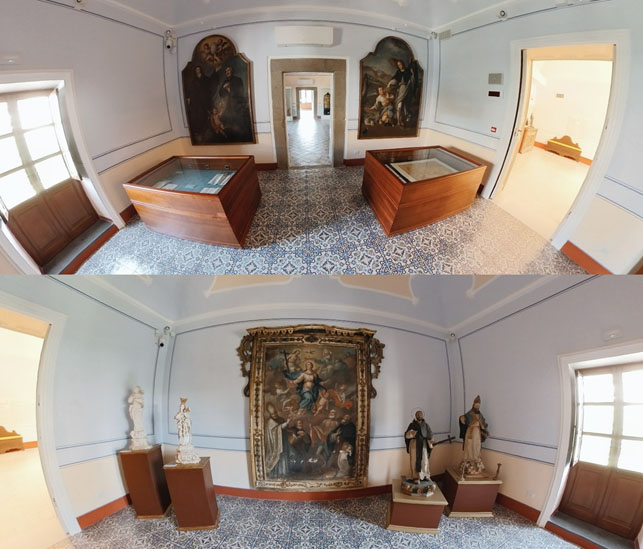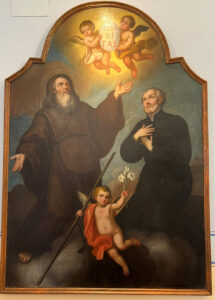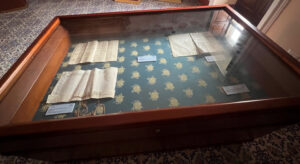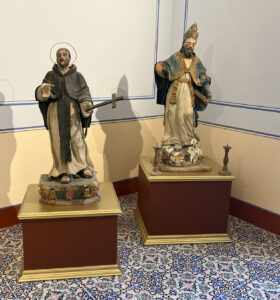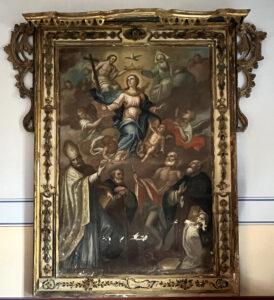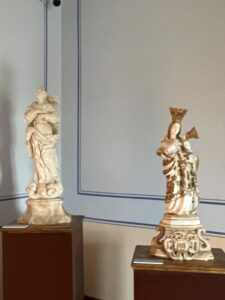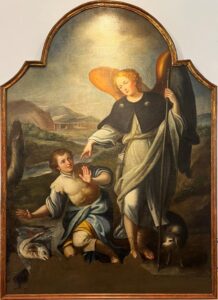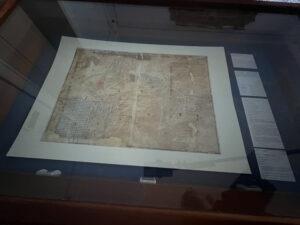Room VI
Room VI is dedicated to Monsignor Francesco Arata, bishop of Lipari from 1663 to 1690, who was so dedicated to reorganising the archives and implementing the Capuchin library to which he also donated many of his volumes.
The sculptures and paintings on display in the Hall offer the opportunity to come into contact with the other devotions present in the Aeolian Islands, attested among other things by the numerous chapels and small churches scattered throughout the area, which are of very ancient foundation.
The wooden statues of St. Leonard and St. Nicholas the Bishop, locally made and dating from the 18th century, come, for example, from the small churches of the same name, which were particularly active during the 18th century. Considerable impetus was given to the cult of St. Leonard by Bishop Di Miceli, while the cult of St. Nicholas is much older and more widespread, probably implanted by Greek monks, as the primitive shrine dedicated to him built on a pagan temple would suggest.
Also from the 18th century, or a little earlier, are the two white marble sculptures depicting the Immaculate Conception and the Madonna of Trapani, the latter having almost certainly arrived through sea trade in fishing.
The two paintings in mixtilinear and ribbed frames are part of the series of paintings commissioned for the side altars of the Church of the Immaculate Conception, built in the mid-18th century by the confraternity of the same name.
Dating from the second half of the 18th century, by an unknown artist, they represent:
S. Francesco di Paola and St. Gaetano, the patron saint of seafarers and the patron saint of Providence, whose cult was already quite widespread as attested by altars and churches dedicated to them;
The Archangel Raphael and Tobias, depicting the famous biblical episode.
The large canvas on the back wall, set within a rich carved and painted wooden frame, depicts The Coronation of the Virgin Mary between Saints Agathon (or Peter Thomas), Calogero, Bartholomew and Anthony Abbot.
The work, an oil on canvas dating from the 18th century, comes from the high altar of the small church of the Assumption or of St. Anthony Abbot, now in an alley behind the square of Marina Corta, but originally – before the expansion of the settlement – directly overlooking the sea. Another small church dedicated to the abbot saint stood within the city walls, before being incorporated into the new church of Addolorata in the late 17th and early 18th century.
On display are a selection of documents from the Historical Archive of the Lipari Diocese, covering a time span from the 17th to the 19th century.
In addition to the interesting volume containing the manuscripts of the first Pastoral Visits conducted by the Bishops of Lipari, worthy of note is the Pianta Geometrica de’ Fondi della Prebenda Vescovile di Lipari of around 1839, which represents, to scale, the property belonging to the Mensa Vescovile di Lipari and the bordering funds, allowing one to reconstruct how the area of the bishop’s palace looked in the early 19th century.

